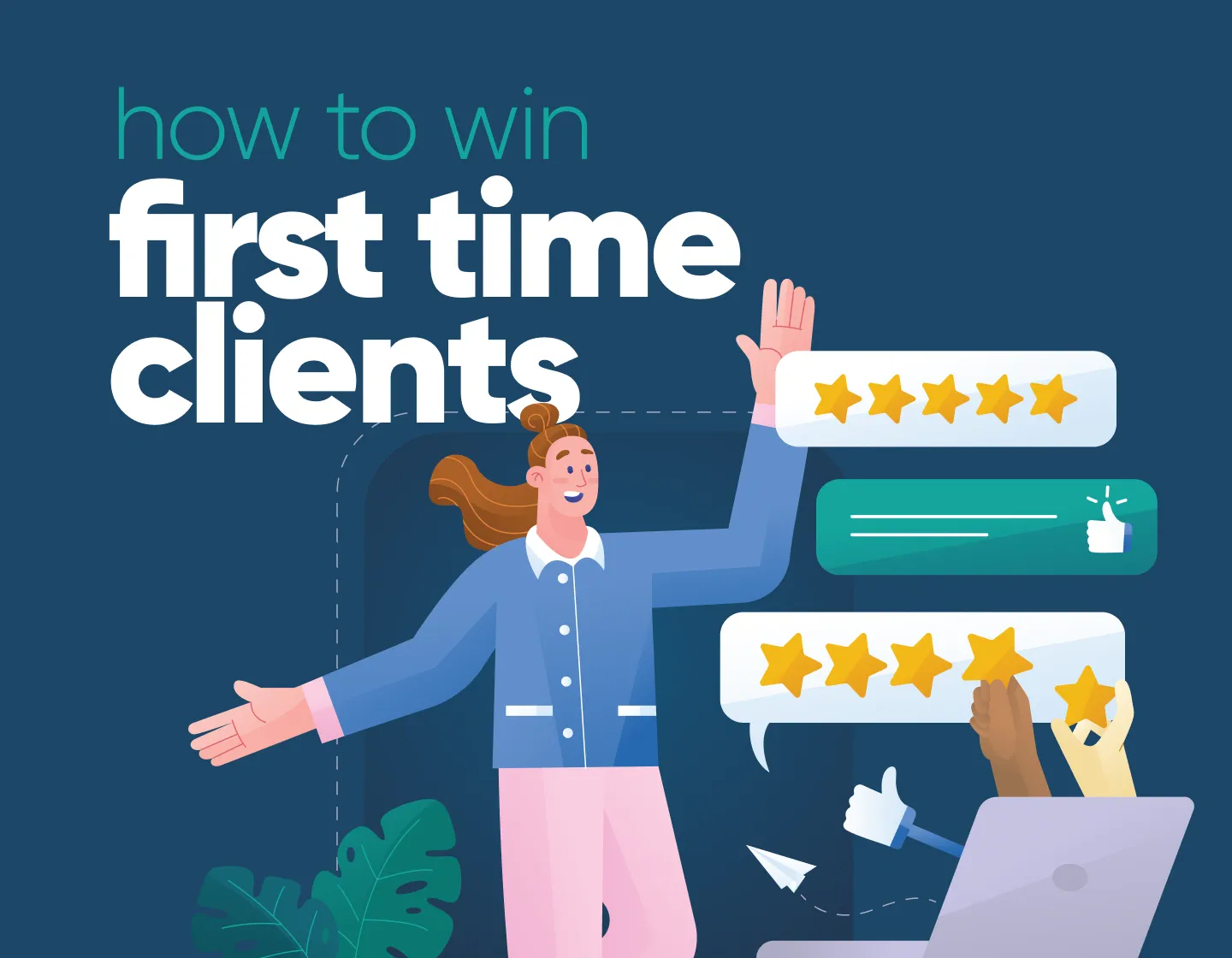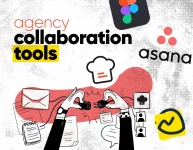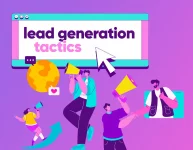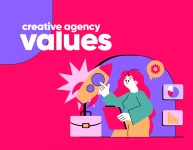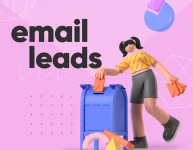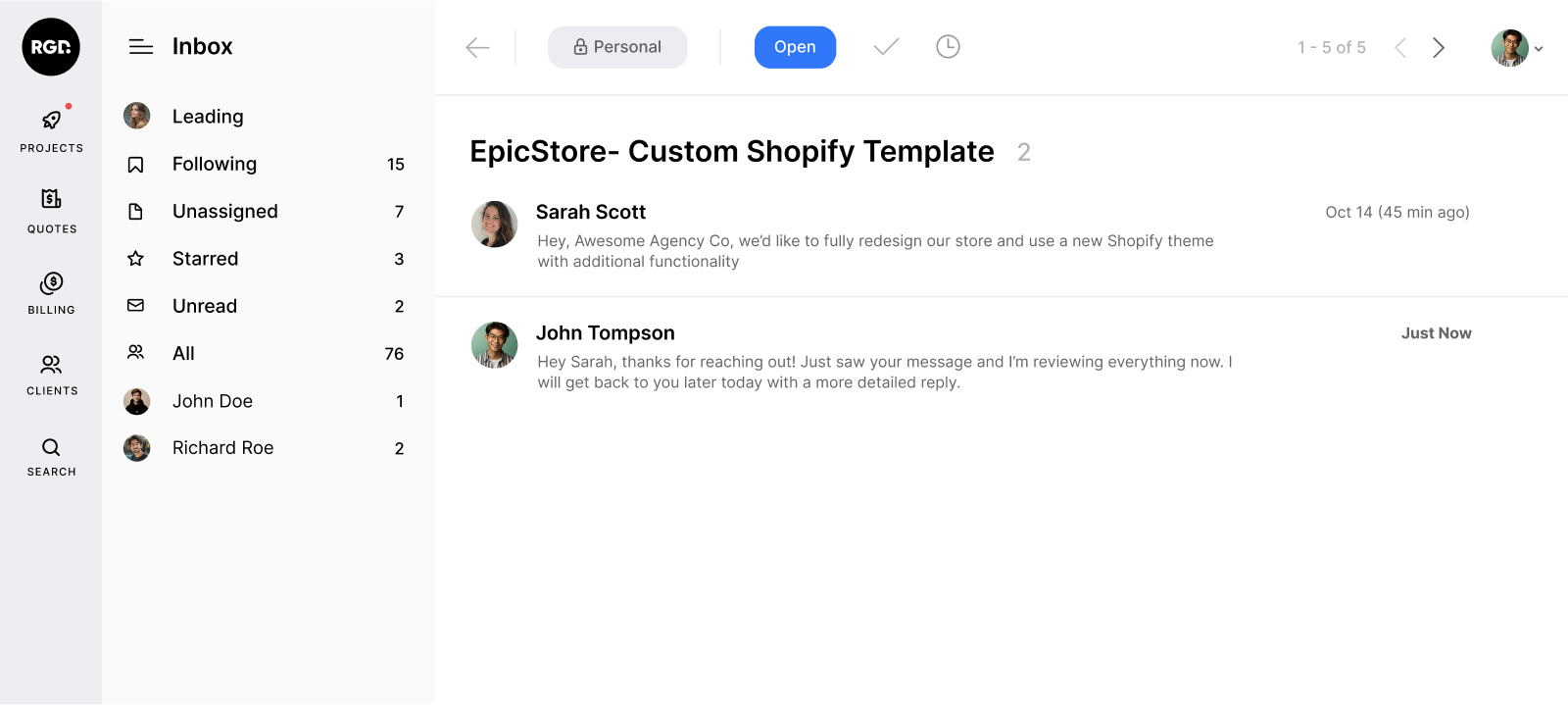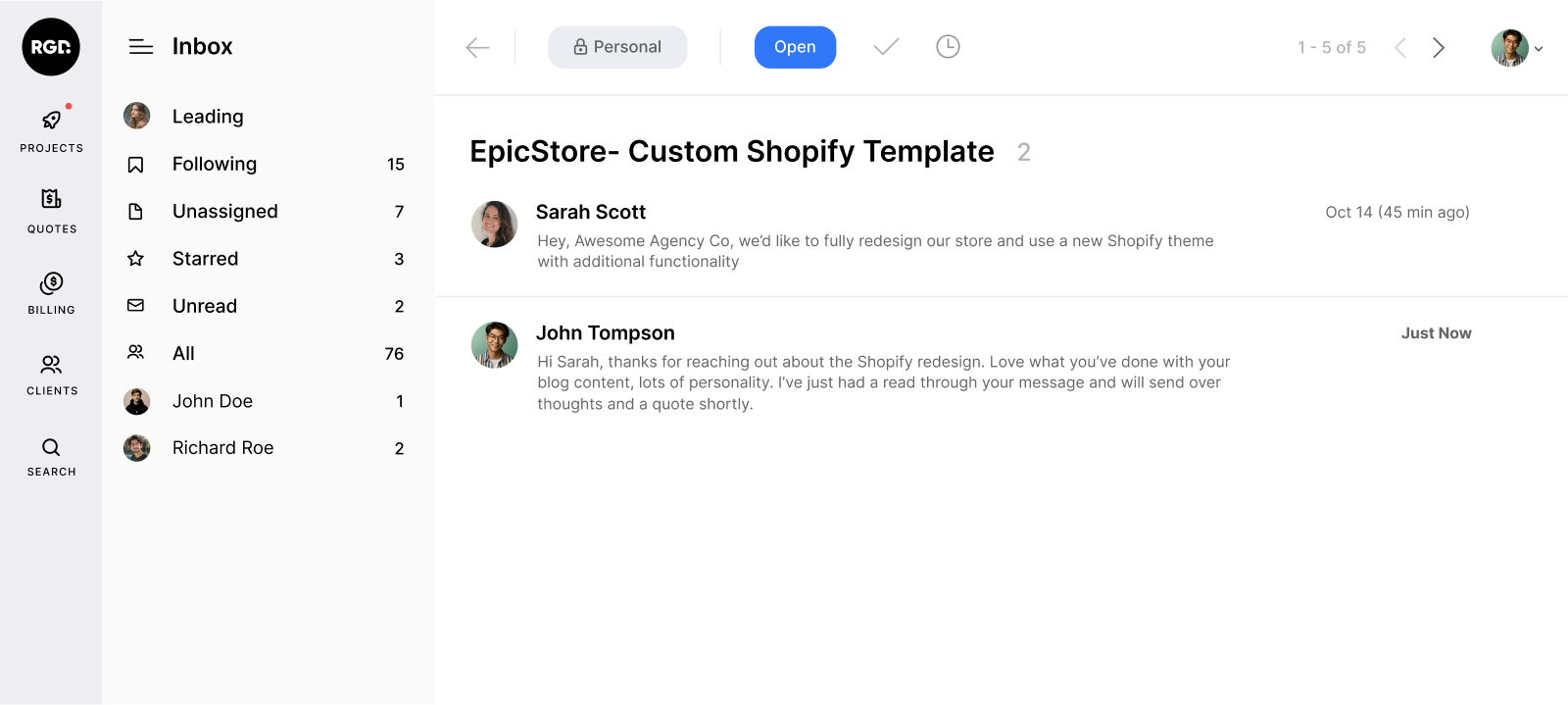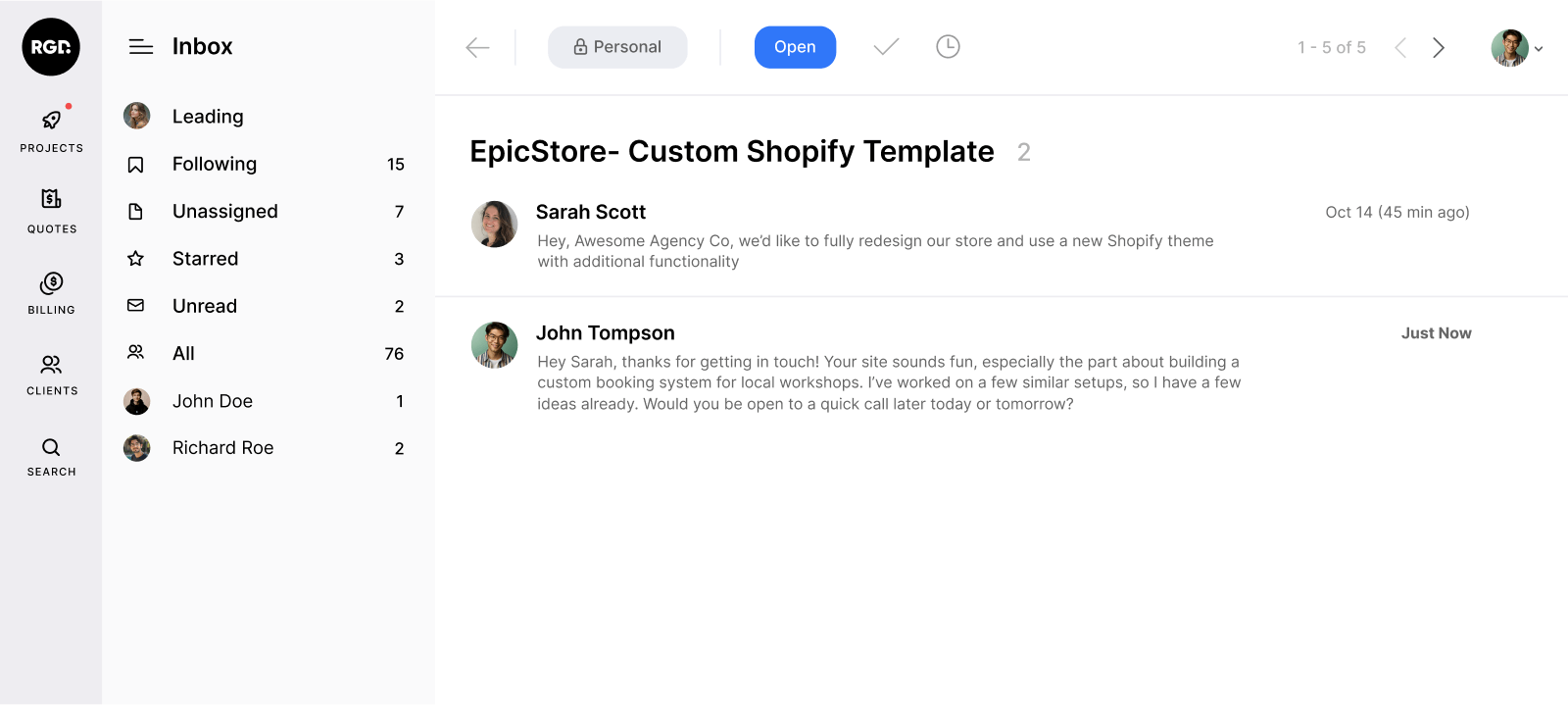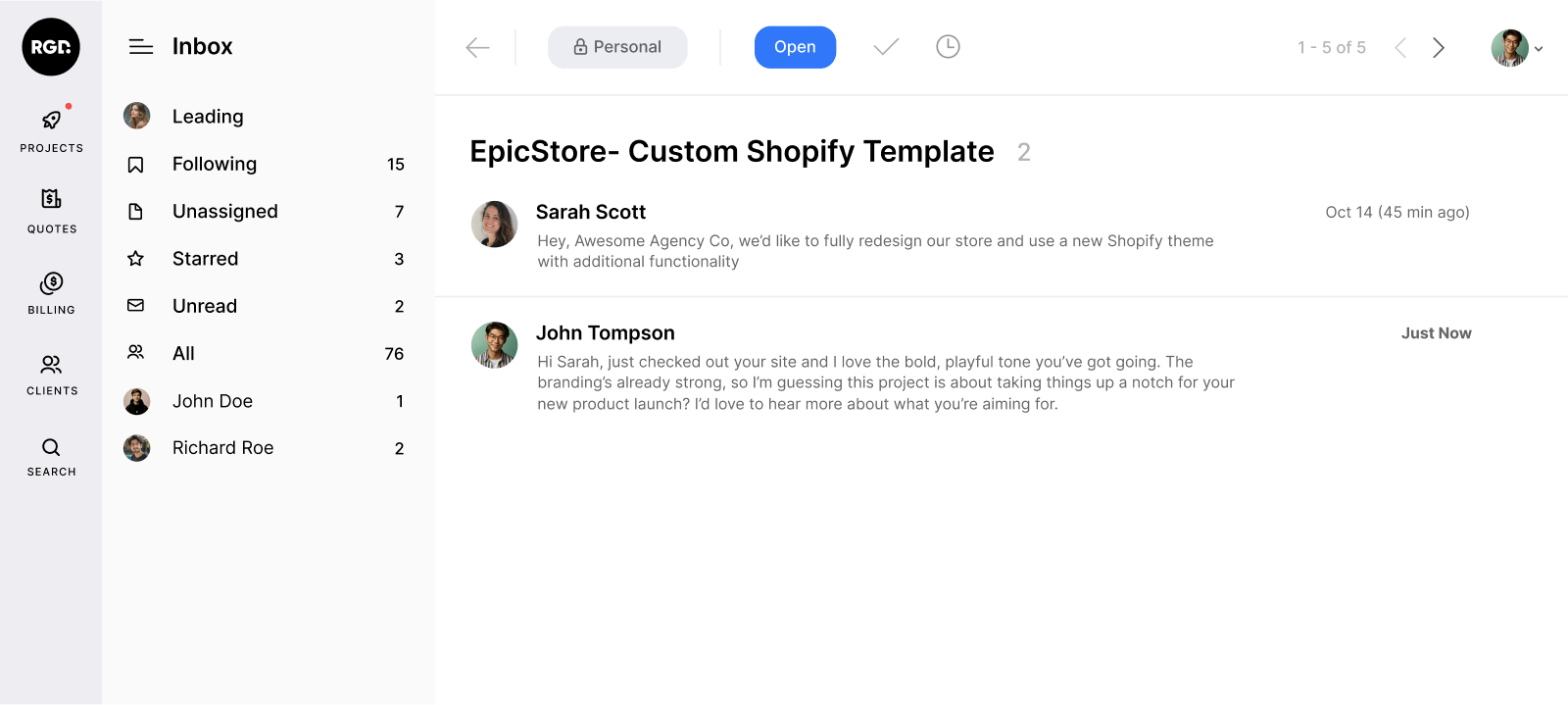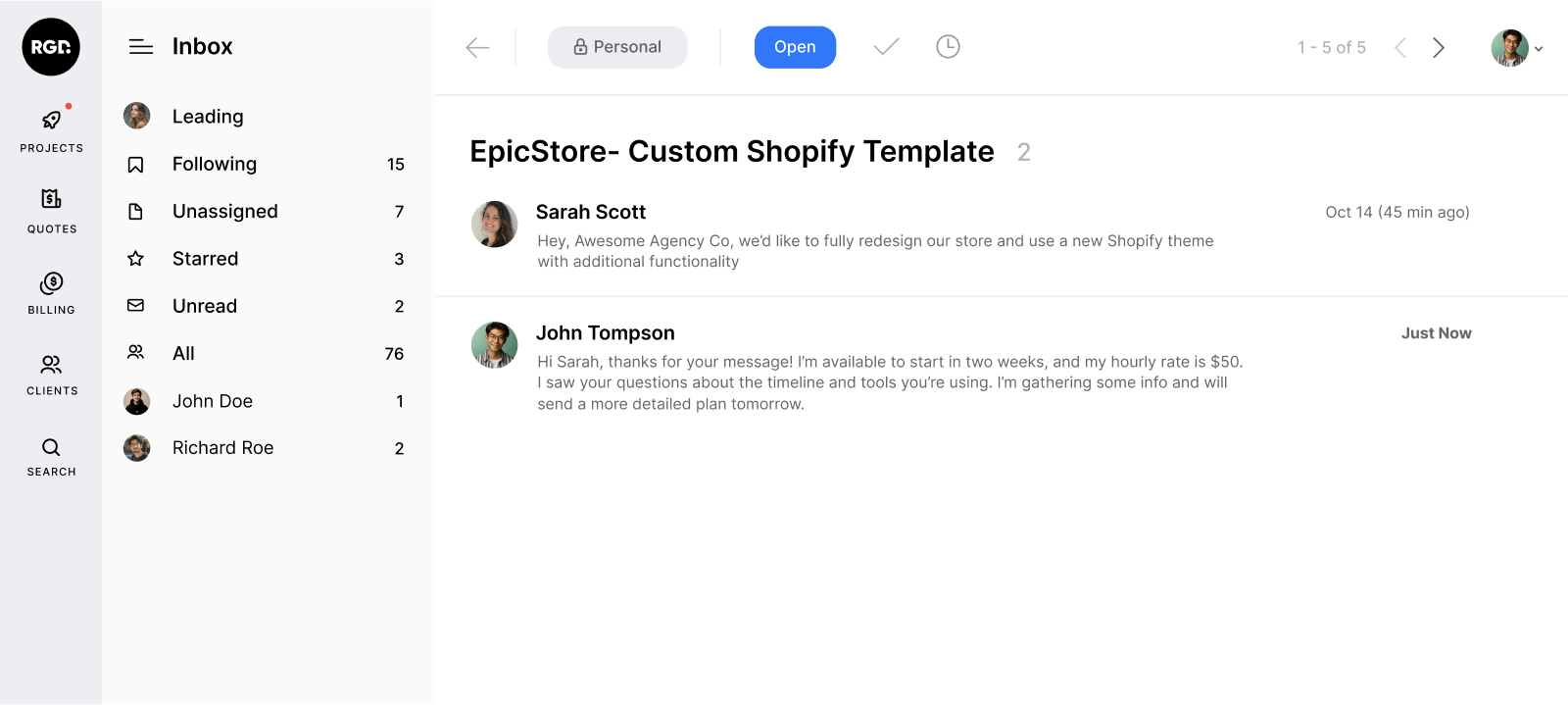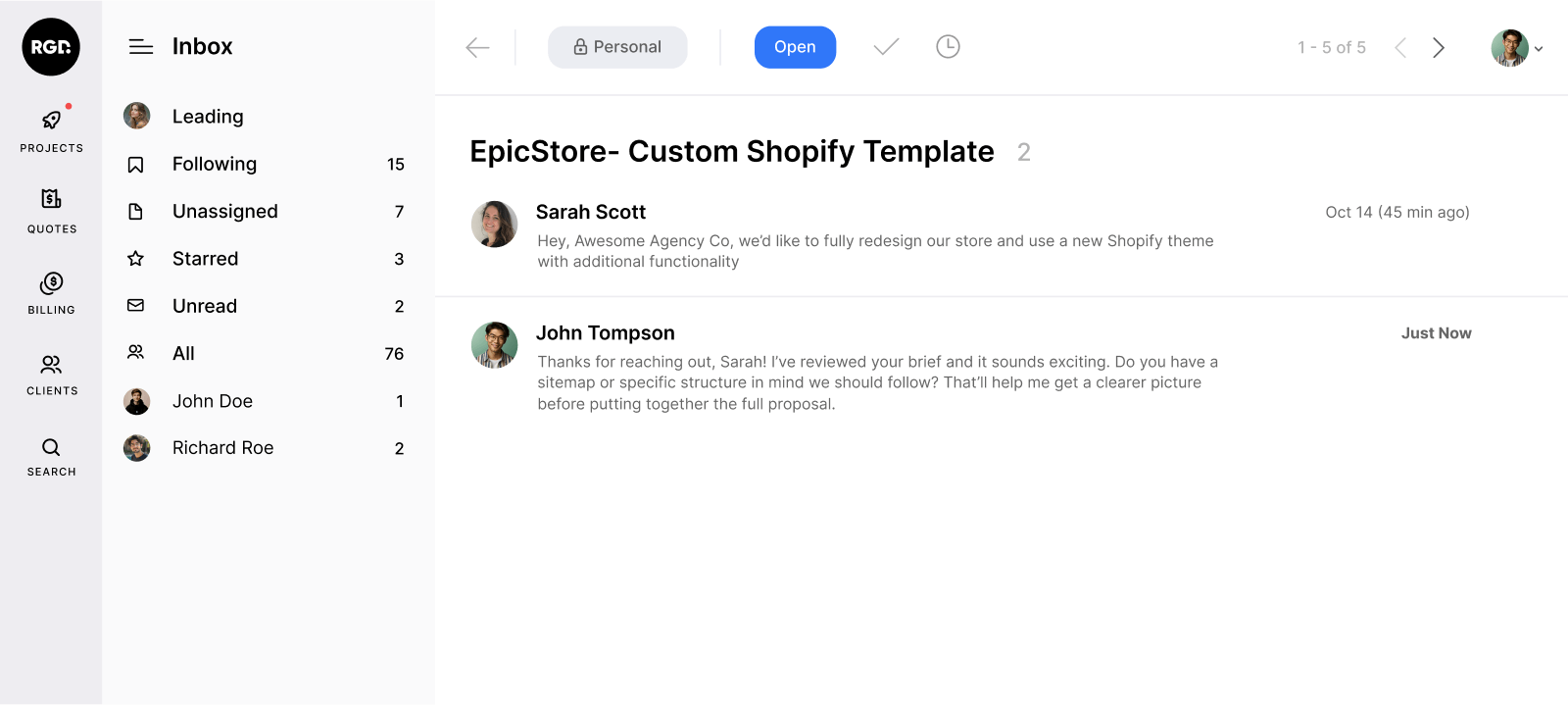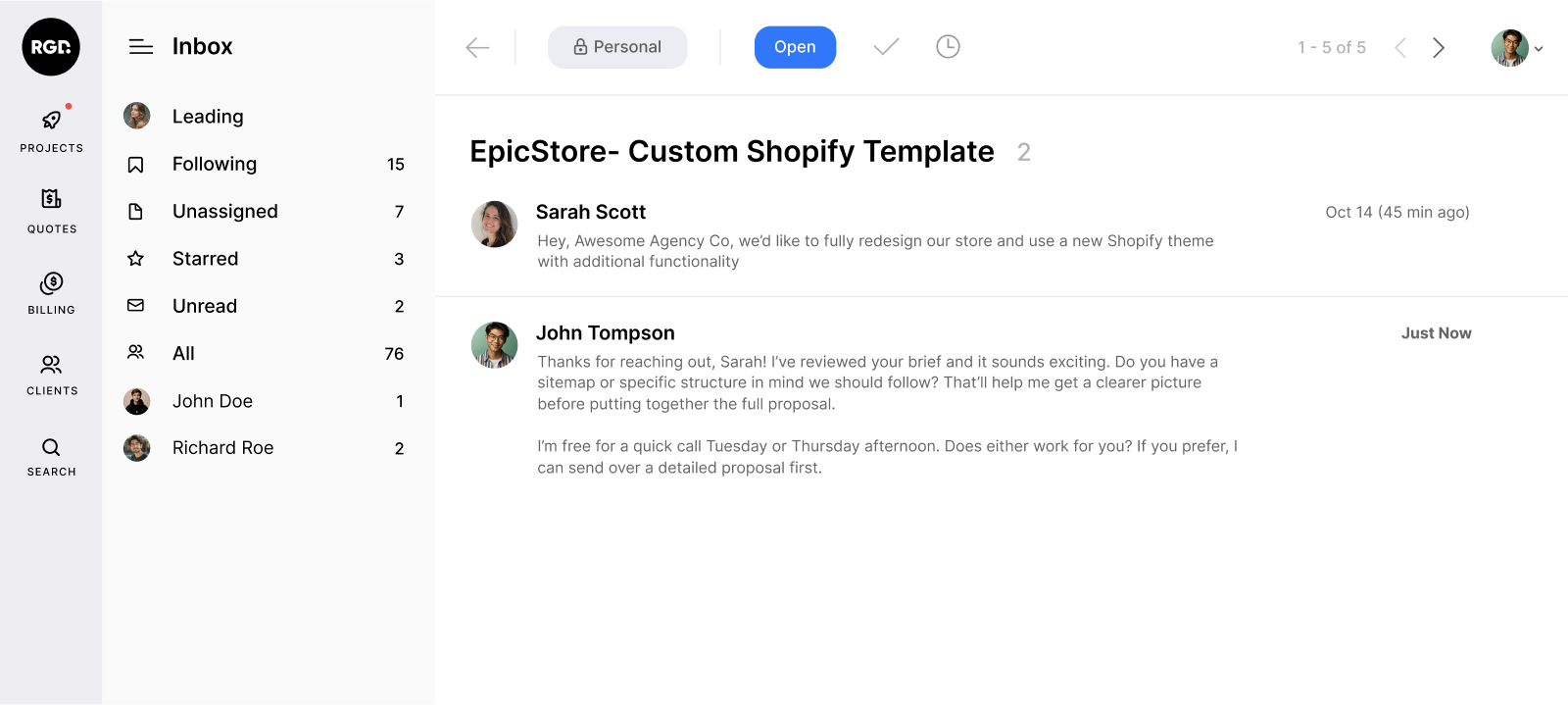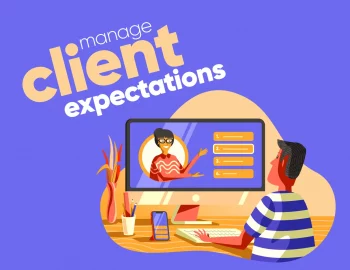The pocket guide to writing responses that win first-time clients, with practical examples.
You’ve got a message sitting in your inbox. It’s a project quote request from someone you’ve never worked with. Nice. It could mean your work’s being talked about, maybe a past client pointed them your way. Or, it’s possible you’re one of the agencies they found through a quick Google search. Either way, you’re in the running and now it’s time to show them they made the right choice contacting you.
Your first reply can either keep the door open or quietly shut it, so to avoid the latter, I’ll walk you through how to make that first message count. In this article I’ll show you real ways to make your response work harder for you with practical examples.
1. Timing Isn’t Everything… But It’s Close
Reply fast, and by fast, I mean really fast, like aim for the first 5 to 30 minutes after the request drops in. That speed alone shows you’re ready, organized, and capable of sticking to tight deadlines.
It also catches the client while their mind is still on the project. They’re thinking about the details, their needs, and the urgency. That’s the perfect moment to jump in.
What if you can’t reply with a full answer just yet? No problem. In this case, a friendly acknowledgment is enough:
Hey Sarah, thanks for reaching out! Just saw your message and I’m reviewing everything now. I will get back to you later today with a more detailed reply.
That tiny message buys you time and keeps their attention.
If you wait a few hours or, worse, a couple of days, you’ll lose the momentum, and someone else has probably already started a conversation.
2. Think About Their Timezone, Not Just Yours
If you’re working with international clients, your 11 PM might be their 9 AM. That doesn’t mean you need to be online 24/7, obviously, but you should reply when they’re likely to be working and available to chat (not to mention a couple of hours’ time difference can buy you time).
Here’s a rough guide:
- Avoid sending your full reply during their early morning routine or end-of-day wrap-up.
- Skip the lunchtime slot.
- Aim for mid-morning to mid-afternoon in their local time, somewhere between 10 AM and 4 PM.
That’s where scheduling tools come in handy. You can write the reply when it works for you, then time it to land when they’re most likely to read it during their business hours.
You’re not just being polite here. You’re showing you get how they work.
Pro tip: Tools like Gmail’s built-in scheduling feature or Mailtrack let you draft your message now and set it to send later. So while you’re sleeping, your reply lands right on top of their inbox when they’re having their first coffee.
3. Keep It Short But Make It Count
That first reply doesn’t need to be your life story. You can start with a warm thank-you, reference something specific from their message, and confirm you’re looking into it.
Of course, template-style replies are okay as long as they sound like a real person wrote them. Especially when you’re working with templates, do a little bit of personalization like mentioning their company name, project type, or even something cool from their website.
Example:
Hi Sarah, thanks for reaching out about the Shopify redesign. Love what you’ve done with your blog content, lots of personality. I’ve just had a read through your message and will send over thoughts and a quote shortly.
4. Don’t Copy-Paste Like a Robot
You’ve probably got a few go-to replies saved up. That’s fine, it saves time. But if you’re just swapping out the name and sending the same thing to everyone, people can tell.
Clients can sniff out a template faster than you think, especially if they’ve contacted multiple people at once (which they often do). Chances are, most of the other agencies also use similar templates, so if your reply feels cold or pre-written, it blends in with the rest and the client will proceed with the only genuine reply they see.
So yes, use a base template if it helps, but don’t stop there.
Here’s what not to do:
Hi Sarah, thank you for your message. I’d love to help with your project. I have extensive experience in similar work and can deliver high quality results. Let me know your availability to discuss further.
That could apply to any project. There’s nothing in there that shows you actually read what she said. It’s polite, but it’s also completely vague and forgettable.
Here’s a better approach:
Hey Sarah, thanks for getting in touch! Your site sounds fun, especially the part about building a custom booking system for local workshops. I’ve worked on a few similar setups, so I have a few ideas already. Would you be open to a quick call later today or tomorrow?
It’s not longer. It’s just alive. You’re showing interest, curiosity, and a bit of initiative, all in a friendly, low-pressure way. That kind of reply makes people pause and think, “Alright, this person’s actually paying attention.”
Quick fix when you’re using a template:
Drop in a short line that proves you read what they wrote. Ask about something specific they mentioned. Or make a light comment about the design, the industry, the challenge, anything that wouldn’t show up in a canned reply.
It doesn’t have to be clever. It just has to feel real.
5. Do a Quick Background Check
Before you hit reply, pause for five minutes and get a sense of who they are. If they dropped a company name, Google it and look at their team page, if they have one. Scroll their homepage, skim their portfolio, peek at their social feeds, whatever’s easiest.
Of course, you’re not writing a report, but collecting a bit of context will help you write a reply that doesn’t feel like it could’ve gone to anyone.
Why it matters:
The way you talk to a three-person creative agency is not the way you’d talk to a logistics manager at a Fortune 500 company. One might appreciate quick humor and relaxed tone; the other might want clarity and structure.
Even subtle shifts like calling something a “project” instead of a “campaign,” or saying “I’d love to collaborate” vs. “I’d be happy to assist” can show you get their world.
Here’s what not to do:
Hi Sarah, thanks for your message. I’ve worked with many businesses and would be happy to help you with your branding. Please let me know more about the project.
It’s polite. It’s fine. But you clearly didn’t look them up, and it shows.
Now here’s a better version, after spending 3 minutes looking at their site:
Hi Sarah, just checked out your site and I love the bold, playful tone you’ve got going. The branding’s already strong, so I’m guessing this project is about taking things up a notch for your new product launch? I’d love to hear more about what you’re aiming for.
Now you sound like you’ve already started thinking. You’re not just replying, you’re actually engaging, which already puts you miles ahead of the generic responders.
Quick tips on what to look for during your check:
- Website: Does it look new? Modern? Professional? Personal?
- Team: Are they a small studio, a big company, or a solo founder?
- Tone: Is their copy fun, formal, clever, or technical?
- Recent work or posts: What kinds of projects are they proud of?
- Social media (if relevant): Casual or polished? Quiet or chatty?
6. Friendly Is Good. Over-Friendly? Not So Much.
A friendly tone shows you’re approachable. But if you go too casual, it can feel off. You don’t know them yet. You don’t know if they’re the kind of person who signs off with “Cheers 😊” or “Kind regards.” So, stay friendly but polite until you’ve seen how they communicate.
Here’s what not to do right off the bat:
Hey hey! Thanks for sliding into my inbox 😎 Can’t wait to jam on this, sounds dope!
That tone might work if your client is a tattoo studio with memes all over their Instagram, but if you’re writing to a SaaS founder or marketing manager, it’s going to land wrong. It’s trying too hard. It also doesn’t give any useful signal that you’re actually going to deliver solid work.
Instead, try something like this:
Hi Sarah, thanks for reaching out, I’m happy to hear from you! Just had a look at your brief and it sounds like a great fit. I’ve done similar work for EpicAgencyName, so I’d love to hear more about what you’re aiming for.
This still sounds human. It’s warm, but doesn’t cross into “chatty stranger in the elevator” territory.
Once the client drops the “Hi!” and starts saying things like:
Hey hey! Loved your portfolio. Excited to kick this off 🎉
…then you can shift gears too. You might reply:
Hey! Appreciate the kind words, same here 😊 Looks like a fun one!
But you let them set that tone first.
You can use neutral-friendly openings like:
- “Appreciate you reaching out”
- “Thanks for your message, great to connect”
- “Thanks for the details, looks interesting!”
All of these keep things human without assuming too much familiarity.
7. Actually Answer Their Questions
If the client asked something specific, like your availability or pricing, just answer it straight up. You don’t need to give your entire proposal just yet, but at least touch on the main points.
If the questions are too detailed for a quick reply, acknowledge them and set an expectation.
What not to do:
Thanks for reaching out! I’m excited about the project and will get back soon with all the details.
This reply doesn’t touch their actual questions. It feels vague and leaves them wondering if you even read their message. That silence can push them away.
What to do instead:
Even if you can’t give every detail immediately, acknowledge what they asked and give a quick, honest answer.
Hi Sarah, thanks for your message! I’m available to start in two weeks, and my hourly rate is $50. I saw your questions about the timeline and tools you’re using. I’m gathering some info and will send a more detailed plan tomorrow.
This hits the main points they asked, shows you’re on top of things, and sets a clear expectation for the next steps.
8. Ask One Good Question
If you end with a question, it will keep the conversation going and show you’re thinking actively about their project.
Good types of questions to ask:
- Clarification: Do you already have a sitemap or wireframe you want to follow?
- Timeline: Is there a firm deadline you’re aiming for?
- Preferences: Are there any websites you admire that could inspire this project?
What not to do:
Thanks for your message. I’ll send the full proposal soon.
No question, no invitation for the client to reply or clarify anything. It feels like a dead end.
What to do instead:
Thanks for reaching out, Sarah! I’ve reviewed your brief and it sounds exciting. Do you have a sitemap or specific structure in mind we should follow? That’ll help me get a clearer picture before putting together the full proposal.
This keeps the dialogue going and helps you gather details early on.
Bonus: Make it easy to take the next step
People get busy. If they have to figure out how to reply or what to do next, it creates friction. Therefore, if you remove that friction, it will be easier for them to say yes or at least keep talking.
Good ways to close your message:
- Include a link to schedule a call or meeting.
- Ask about their timeline to prompt details.
- Offer to send a more detailed proposal or samples next.
What not to do:
Let me know if you want to talk more.
This leaves too much up to them. It’s vague and requires them to take extra mental steps.
What to do instead:
I’m free for a quick call Tuesday or Thursday afternoon. Does either work for you? If you prefer, I can send over a detailed proposal first.
Your initiative makes the next step clear and easy to act on.
Another example:
To keep things moving, do you have a timeline in mind? I can tailor the plan around that.
Again, it gives them a simple, focused question that helps the conversation progress.
And there you have it!
Winning a new client comes from showing, right from the first message, that you’re thoughtful, reliable, and easy to work with. Respond fast, talk like a real person, show interest in their project, and invite them into a proper conversation. That’s how you get chosen.
In the meantime, if you want more insight or inspiration, check out the blog, or jump straight into some of the following articles:


